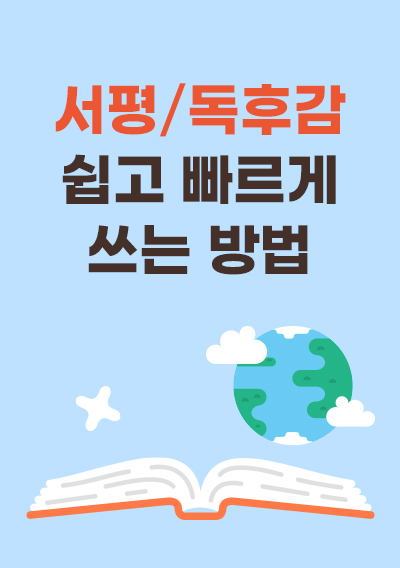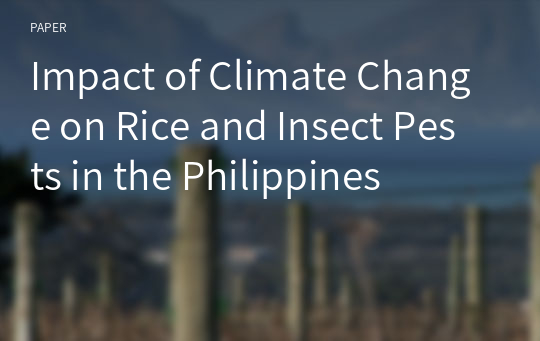Impact of Climate Change on Rice and Insect Pests in the Philippines
* 본 문서는 배포용으로 복사 및 편집이 불가합니다.
서지정보
ㆍ발행기관 : 한국응용곤충학회
ㆍ수록지정보 : 한국응용곤충학회 학술대회논문집
ㆍ저자명 : Genaro S. Rillon, Alvin J. Gabriel
ㆍ저자명 : Genaro S. Rillon, Alvin J. Gabriel
영어 초록
Impacts of climate changeIPPC report (2007) predicts that by the end of 21 st century there will be an expected climate change. Evidences include increases in global average air and ocean temperatures, widespread melting of snow and ice, and rising global mean sea level, and that most of the observed increase in globally averaged temperatures since the mid-20th century is very likely due to the observed increase in greenhouse gas conditions. Other global manifestations of climate change are the natural hazards that are becoming more frequent and more intense such as more floods, more droughts, more intense storms, typhoons and more heatwaves. Since the 1970’s, more intense and longer drought have been observed over wider areas, particularly in the tropics. Frequency of heavy rains has also increased over most land areas.
In the Philippines, analysis of the observed climatic data showed that there has been an increased in annual mean temperature by 0.57 o C. In terms of maximum and minimum temperatures, the increases have been 0.35 and 0.94 o C. Results of analysis of trends of tropical cyclone occurrence showed that an average of 20 tropical cyclones per year, that there still no indication of increase in the frequency, but with slight increase in the number of tropical cyclones with maximum sustained winds of greater than 150kph. The analysis of trends of extreme daily temperatures and extreme daily rainfall indicate significant increase in number of hot days but decrease of cool nights, and those of rainfall (extreme rainfall intensity and frequency) are not clear, both in magnitude and direction.
The findingson the analysis of future climates showed that all areas of the Philippines will get warmer especially in the summer months. Annual mean temperatures (average of maximum and minimum temperatures) in all areas in the country are expected to rise by 0.9 o C in 2020 by 1.8 to 2.2 o C in 2050. In terms of seasonal rainfall change, generally, there is a substantial spatial difference in the projected changes in rainfall in 2020 and 2050 in most parts of the Philippines, with reduction in rainfall in most provinces during the summer season making the usually dry season drier. During the southwest monsoon season, larger increases in rainfall is expected in provinces in Luzon (0.9% to 63%) and Visayas (2% to 22%) but generally decreasing trends in most of the provinces in Mindanao in 2050. However, projections for extreme events in 2020 and 2050 showed that hot temperatures (indicated by the number of days with maximum temperature exceeding 35 o C) will continue to become more frequent, number of dry days will increase in all parts of the country and heavy daily rainfall events will also continue to increase in number in Luzon and Visayas.
Climate change effects on rice
Increase in temperature may lead to yield reduction as caused by heat stress, decreased sink formation, shortened growing period, and increase maintenance respiration. Given the 10% yield reduction for every 1 o C increase in temperature, an estimated 1.5 M M/t of rice harvest will be lost. Since the Philippines is considered to be vulnerable to extreme meteorological events like typhoons, floods and droughts, it was estimated that approximately 84% of the about 2.32 M hectares of rice land will be affected by climate change.
Climate change effect on insect pests and natural enemies
Temperature is very important factor influencing insect behavior, distribution, development, survival and reproduction (Bale et. al., 2002). In Japan, it has been estimated that with a 2 o C temperature increase insects might experience one to five additional life cycles per season (Yamamura and Kiritani 1998). Moreover, climate change may affect the population dynamics of arthropods that will lead to change in the species composition of ecosystem, pests’ migration and change in the geographic distribution of pests. Naturally occurring biological control is expected to become a more important control tactic in the future although, warming might also have a negative effect on some natural enemies such as hymenopterans and small predators. Furthermore, there are attempts to correlate relative humidity with insect development and survival. A study showed that the population of Nilaparvata lugens reached high levels when plants of the Peta variety were transplanted close together, probably because of the high relative humidity created in the insect’s habitat (IRRI, 1973). A more detailed study was conducted in the IRRI phytotron and results showed that that N. lugens had high survival in 50-60% relative humidity as compared to 80% relative humidity (IRRI, 1976).
Work in the Philippines showed that more insect pests were observed in wet season as compared to dry season (Calora and Ferino, 1968; Hsieh, 1972; Ferino, 1968; Alam, 1971). Hence, if there will be more frequent and severe climate extremes like more rainfall and flooding, some pests may become more serious. On the other hand, a long drought followed by rainfall may cause outbreak of locust, armyworms, and leaffolders.
Adaptation to adverse impacts of climate change
In the Philippines, rice varieties for adverse environments are available such as submergence and drought-tolerant varieties. The use of aerobic rice production system maybe useful in the future especially if there will be limited water supply since in this technology, the water use is only half of that of lowland rice systems.
In rice insect pest management, understanding the impact of climate change to rice plant, insects pests and their natural enemies is very important in preparing for and adapting management strategies against pests that may become established due to changes in the environment. It is also necessary to assess pest problems in vulnerable areas affected by climate change. The applications of agro-meteorological information using modern information communication tools may provide timely provision of weather and climate information for farmers use.
참고 자료
없음"한국응용곤충학회 학술대회논문집"의 다른 논문
 Contents28페이지
Contents28페이지 Biological control of insect pests in Korea: a perspect..5페이지
Biological control of insect pests in Korea: a perspect..5페이지 외래해충 최근 발생현황 및 관리4페이지
외래해충 최근 발생현황 및 관리4페이지 Integrated Management of Oak Wilt Disease4페이지
Integrated Management of Oak Wilt Disease4페이지 Chemicals Relating the Host Selection by the Common Blu..3페이지
Chemicals Relating the Host Selection by the Common Blu..3페이지 Utilization of Microbial Insecticides in Japan5페이지
Utilization of Microbial Insecticides in Japan5페이지 Selecting effective chemical control agents of Bemisia ..6페이지
Selecting effective chemical control agents of Bemisia ..6페이지 Developmental and ovipositional characterisitics of Bem..3페이지
Developmental and ovipositional characterisitics of Bem..3페이지 Chiggers of medical importance in Korea8페이지
Chiggers of medical importance in Korea8페이지 Ticks and tick-borne pathogens: Public health33페이지
Ticks and tick-borne pathogens: Public health33페이지




















